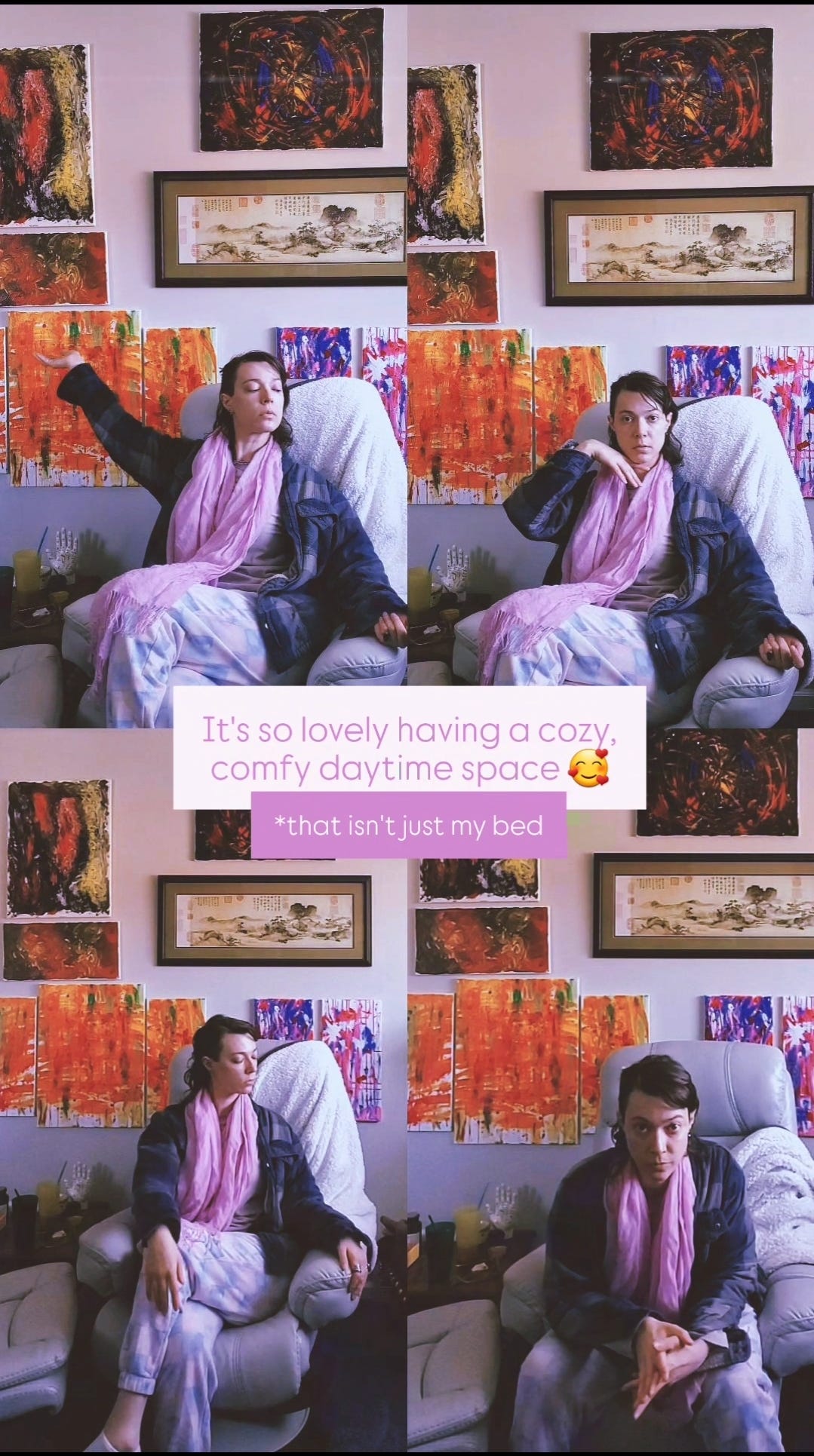Heading into March is not just a transitional period for the seasons; it's also a transitional period for me.
Winters are very hard on my body.
It's (typically) the most difficult time of the year for me in regards to Dystonia symptoms.
During that time I really focus on slowing down.
I pull back a lot more and in doing so, I also have more time to contemplate and consider how I've been going about projects and goals, and how I might do things differently.
This could be exercise, looking at my creative process or how I'm sharing art..
One of the shifts I'm making this year is how I approach goal-setting and implementation.
It's hard for me - let's be honest, it's almost impossible for me - to set goals in a traditional, expected, socially acceptable format.
I have a couple exercise goals right now that include getting stronger and relieving tension.
Traditional goal-setting (as far as the day-to-day) would look something like:
Working my upper body on Mondays and Fridays and lower body on Tuesdays and Thursdays and resting on Wednesdays.. scheduling specific types of exercise on specific days, and continuing that week after week.
One of the primary reasons this does not work for me is I never know what my energy is going to be like on any given day.
Even after taking the couple hours that I need to get up in the morning, get settled into my body, and take stock of what my capacity is in that moment-
Even then, I don't necessarily know what might change throughout the day: my ability to use my limbs, my balance or mobility, how sick or dizzy I may be, or whether or not I can be upright.
I don't know what may change over the course of a day, certainly not over the course of a week.
So what can I do?
How can I still try to set goals for myself but go about moving towards those goals in a way that sets me up for success?
Having a selection, a variety of different tasks that can move me towards the goal but require different amounts of energy, means that I can pick something from the list on that particular day that fits my capacity.
If we stick with that example of exercise goals, my schedule for the day might be:
At some point (hopefully at least once) I'm proverbially or literally “getting on the mat”.
That's it. That's the goal.
I then pick one or more exercises from the list of different types of movement that best suit my energetic capacity and ability-
I can lift weights, do Pilates or other body weight exercises, stretch, use a foam roller.. all of which help move me towards those more general, long-term goals.
Shifting how I approach goals and moving towards them also applies to art and creative projects.
Having a few to several different ongoing or longer-term creative projects at the same time also provides me with different types of tasks that I might go about during the time where I “get on the mat”.
I have a daytime space that I've recently put together for myself*; the goal for the day is to sit in the chair, in the daytime space, and once again choose a task that fits my ability and capacity in that moment.
*images of the new space at the end of the post
Unfortunately, living with multiple chronic health conditions doesn't mean that I only struggle with work goals.
It also means that even something as simple and low energy as watching a movie takes it out of me, so I have to be mindful about how I spend my energy with the fun things too: things that are mostly or solely for my own personal enjoyment or edification.
I can also apply this same principle of having a toolkit, a selection of things that I enjoy that require different types of energy*: language study, sit and listen to music or move with the music, sing, or watch a movie.
*different types of energy including physical energy and mobility, mental capacity, and emotional capacity
This shift in how I approach goals is beneficial to me because it's sustainable and I'm setting myself up for success.
If the goal is “I'm going to get on the mat/I'm going to sit in the chair and do something from the array of choices,” then as long as I've done that, I've achieved the daily goal.
When I set very specific goals with time limits, it often leads to failure. That is demoralizing.
By approaching day-to-day goal setting in this new way, I'm less likely to get discouraged and more likely to be productive because I'm achieving my goals more often.
Of course there are going to be some days where I just need to rest.
But generally speaking, even if I have very little energy or time to devote to building towards larger goals, I usually can do a little something.
As I shift my expectations in terms of what I do on a daily basis, I'm hopeful that over time, I will have more experiences of feeling successful which will boost my confidence and make it easier to keep moving forward.
That is a more sustainable way for me to go about pursuing goals.
As I said, winters are rough.
Winter basically chews me up and spits me out.
And as I approach spring, I take stock:
What's the status of my symptoms?
What do I need to change or do differently?
And I problem solve, adjust, and move forward as best as I can.



